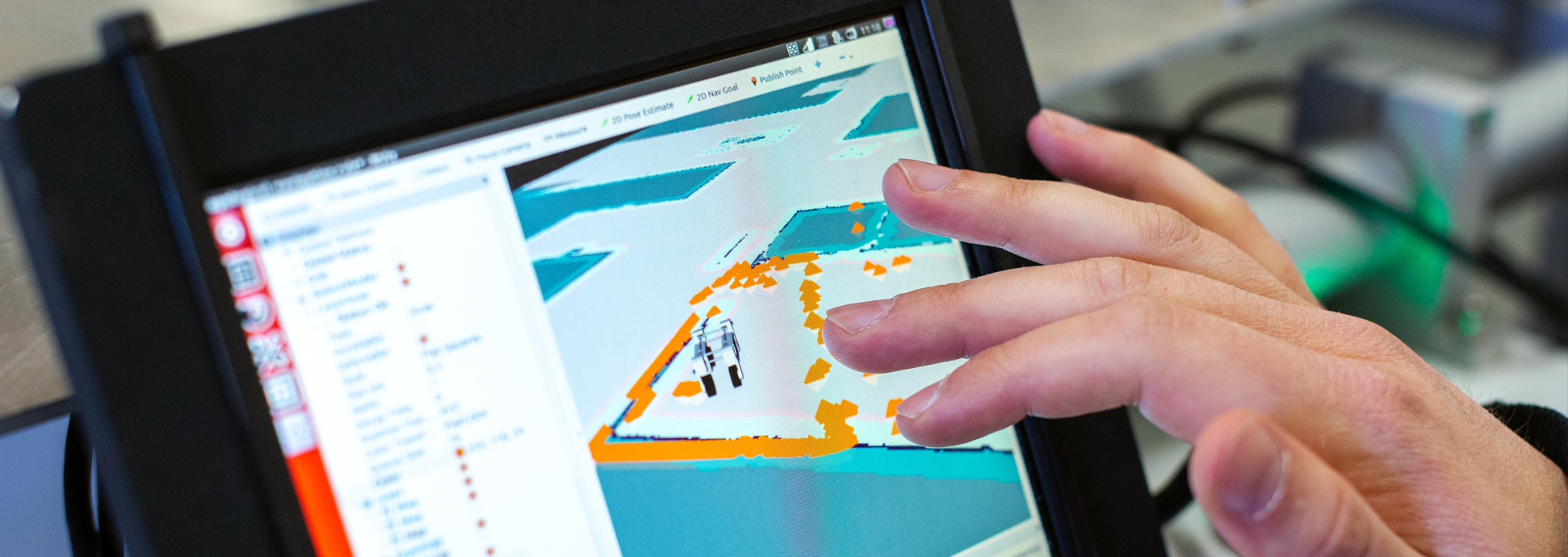How Innovation And Technology Are Shaping The Construction Industry.

How Innovation And Technology Are Shaping The Construction Industry.
Innovation in the construction industry is moving at an unprecedented rate, but just before you get out your Luddite-inspired placards and wage war on the technological revolution, let’s look at how technology is actually shaping the industry.
It’s perfectly understandable to be concerned about the rise and accessibility of technologies like artificial intelligence and automation.
But with the technologies outlined below, you’ll see there’s more reason to be hopeful than fearful, and if you embrace change, you’ll unlock competitive advantages instead of being left behind.
7 Ways Technology Is Impacting Construction
History tells us that technology accelerates job creation rather than stifles it. This dynamic cycle of “creative destruction” underpins innovation, regardless of the industry or market.
In fact, the World Economic Forum estimates that technology will create at least 12 million more jobs than it destroys by 2025.
While robots rewiring a house or fixing a leaky toilet are unlikely to become mainstream this century, other construction innovations are gaining popularity across the sector.
1. Advanced Takeoff and Construction Estimation Software
One of the most accessible technologies that is impacting the construction industry is quantity takeoff software. Whilst takeoff software isn’t the first buzzword that usually springs to mind when discussing innovation and tech in the construction industry, its effects are profound.
Using construction estimation software like BuildPartner, construction companies can slash administration time and the associated costs of quoting.
Ever quoted for a project, only to never hear from the prospect again? It can be so frustrating – especially if you’ve spent several hours compiling an itemised proposal.
With construction estimation software, you can generate a quotation in minutes. Best of all, with an intuitive platform like BuildPartner, you don’t need a degree in computing to get familiar with it. It’s an affordable solution for even the smallest contractors, and you can even try it for free.
2. Machine-Learning Algorithms
Machine-learning algorithms (MLAs) harness the power of vast amounts of data to learn and make predictions. The success of MLAs depends on the integrity of the data that is built into these databases and predictive models.
With robust data, a construction firm can analyse historical project data (schedules, budgets, performance metrics, etc.) to predict potential delays and cost overruns.
Sophisticated AI supply chain software provided by companies like US-based Intelligence Exchange allows firms to leverage MLAs to access real-time demand insights and generate actionable intelligence.
Armed with better analytics and data, larger firms can optimise resource allocation and reduce waste. Other software-as-a-service (SaaS) providers also harness MLAs, for instance, in construction estimation software.
3. 3D Printing – A Blueprint For Success?
3D printing is presently being used for a host of construction needs. Entire houses have been built using 3D technology, including walls, beams, and facades. As it stands, though, printing houses is neither cheaper, faster, nor more environmentally friendly than traditional building.
Despite the present limitations of 3D printing, printers can create complex architectural designs that traditional construction methods can’t.
Not only that, but a 3D-printed structure is much less wasteful. It’s an additive process, meaning that only the necessary materials are printed, which are often cut by a large 3D printer on site.
Subtractive manufacturing involves material removal with drilling, grinding, cutting, and boring. For example, creating timber products requires the felling of trees, transportation, sawmilling, and sanding before being distributed to merchants and then to construction sites.
4. The Metaverse – Virtual Reality And Augmented Reality
There are some incredibly exciting developments and breakthroughs in the virtual reality (VR) market. IrisVR is a platform that provides to-scale previews of a construction project before a starting.
Developers and construction managers can walk through a pre-built space in an intuitive environment. This allows them to quickly identify clashes, concerns, and items needing refinement.
It’s also possible to manipulate the previews to evaluate multiple scenarios. With a “digital twin”, or a digital as-built, a virtual representation brings to life real-time data and simulates a concept’s real-world characteristics.
VR is now mature enough that CAD programmes are integrating it as a visual tool, which allows designers and architects to fully create in the virtual realm. Watch this space!
5. Building Information Management (BIM)
BIM is a process that enables all stakeholders to communicate easily in one central place, typically leveraging cloud-based software that’s accessible remotely.
It serves as a centralised repository for all project-related information, such as 3D models, specifications, quantities, schedules, and cost data. With BIM software, everyone is singing from the same hymn sheet.
For instance, it allows for the inclusion of real-time inventory, providing project managers dynamic predictions as plans change throughout a project.
BIM models can also demonstrate compliance with building regulations and streamline the approval process.
6. Prefabrication
Prefabrication is the act of making building components – such as staircases, wall panels, and modular units – in another location other than the building site.
Here are some of the benefits of prefabrication:
- Faster construction. Prefabricated components can be manufactured while site preparation takes place. Once on-site, the assembly process is typically faster than traditional construction.
- Quality control. Standardised production processes take place in a controlled factory environment, allowing for rigorous quality control measures.
- Potential cost savings. While the initial costs of prefabrication are higher, the overall project cost can be lower due to reduced labour.
Even so, prefabrication is undergoing innovation of its own, with the introduction of robotic spider cranes which, using a vacuum gripper, automatically places components at the correct installation position and screws them together.
7. New Sustainable Building Materials
Technology often conjures up connotations of robotics and artificial intelligence. But on the least sexy end of the spectrum are the advanced techniques and processes used to extract and create sustainable building materials.
Here are some innovative examples which are being used in the construction industry:
- Bioplastics are derived from renewable resources, including agricultural waste, starch, and vegetable oils. They are moulded into different shapes and used for non-structural components, such as insulation.
- Mycelium, the root structure of fungi, can be grown and shaped to create lightweight and biodegradable materials suitable for insulation and packaging.
- By-products such as fly ash from coal-fired power plants can be used as partial replacements for cement in precast concrete mixes, lowering the carbon footprint of concrete products.
When it comes to green construction, it’s a win-win situation for the planet, contractors, and residents.
Bottom Line On Construction Technology
Media hysteria has a lot to answer for in whipping up fears about technological advancements. At some point, you’ll no doubt have stumbled across inflammatory articles such as this Forbes headline: “Will AI Take Your Job? 27% Of Jobs In Wealthy Countries At High Risk”. It’s important to remember that controversial headlines are ultimately what drives newspaper sales and attract higher click-through rates.
But on the whole, technology and innovation create jobs, not to mention increase efficiency and productivity. Think about the solar industry; it barely existed a couple of decades ago, but in 2022 alone, solar panel installations increased by 48.5%.
As we speak, new industries are being forged and new jobs created. It’s out with the old and in with the new.
Construction Innovation FAQs
What are the four main areas of technology that impact the construction industry?
Broadly, there are four areas in which technology impacts the construction industry.
- Building information modelling (BIM). BIM is the digital representation of a building’s design, construction, and operation. It makes collaboration among stakeholders possible through information sharing and providing visibility of the entire project lifecycle.
- Construction automation and robotics. Automation and robotics are revolutionising construction processes. For example, drones are being used for construction site surveys and bricklaying robots are being piloted in certain markets.
- Internet of things (IoT). IoT technologies collect and transmit real-time data, allowing project managers to make informed decisions, predict maintenance needs, and optimise resource allocation.
- Construction project management software. Construction project management software streamlines project planning, scheduling, budgeting, and communication.
Will technology replace construction workers?
Technology won’t be replacing highly skilled construction workers any time soon. Strict regulations and health and safety standards are in force, and legal ramifications would need to be addressed before new technologies are deemed safe for mass rollout.
And while the technology exists to automate repetitive tasks like bricklaying, the technology is in its infancy, inaccessible to most, and operable only in stable environments.
The jobs which are being affected are mainly administrative, where technology is helping streamline project management, scheduling, and cost estimation.
What are five technologies used in sustainable building?
By integrating the following sustainable technologies into building designs, developers and architects can create more cost-effective and environmentally friendly buildings for the future.
- Underfloor heating. Radiant floor heating uses the floor surface to distribute heat throughout a building and provide more even temperature distribution.
- Rainwater harvesting. Involves the collection, storage, and utilisation of rainwater – generally for non-potable applications such as toilet flushing.
- Solar power. Solar photovoltaic (PV) panels harness energy from the sun and convert it into electricity or heat, reducing a building’s reliance on conventional electricity.
- Geothermal systems. Geothermal heating, ventilation, and air conditioning (HVAC) systems make use of the earth’s stable underground temperature to heat buildings.
Energy-efficient windows. Energy-efficient windows, such as triple glazing, prevent heat loss, meaning heating systems require less energy to reach target temperatures.

